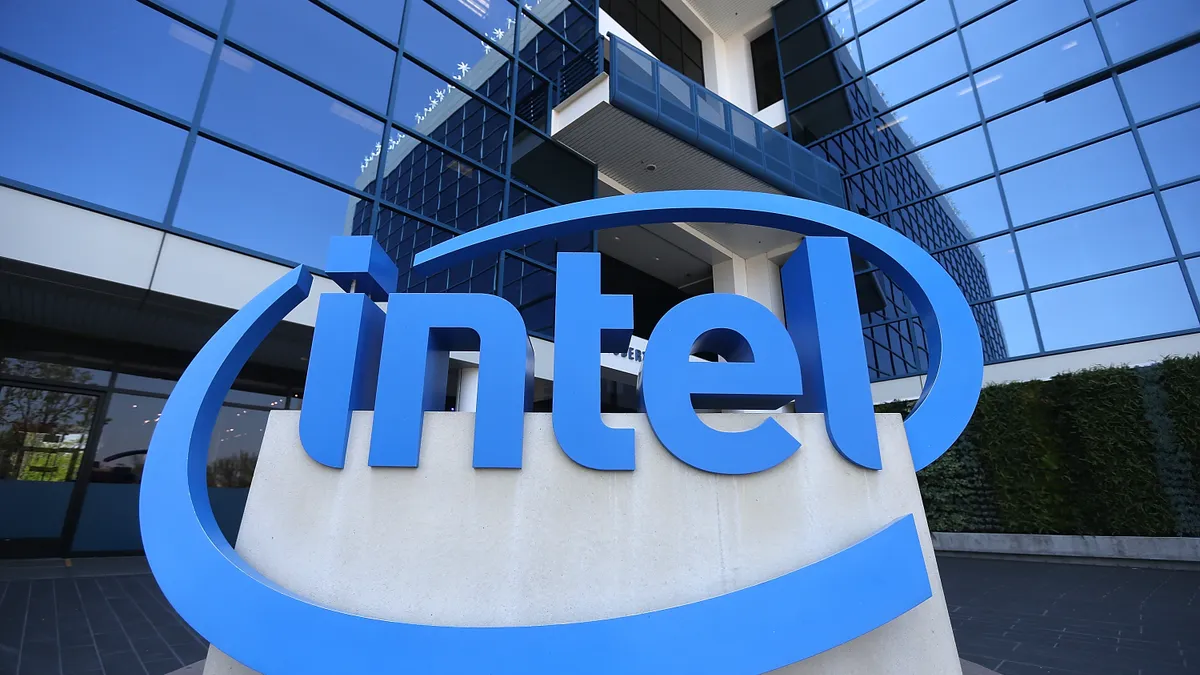Dive Brief:
- Intel unveiled Core Ultra, an advance the 45-year-old company calls its most AI-capable and power-efficient mobile processor to date, Friday. “It was a radical change in how we manufacture and assemble our microchips,” Michelle Johnston Holthaus, EVP, general manager of Intel’s Client Computing Group, said during the announcement.
- The processors are currently available and will be deployed in more than 230 PC models manufactured by Dell, Google, HP, Lenovo, Microsoft, Samsung, and several other vendors, the company said. Intel plans to ship over 100 million client processors in the next two years, Holthaus said.
- The processor arrived in the wake of a prolonged post-pandemic decline in PC shipments that analysts expect to lift next year, as enterprises enter a hardware refresh cycle. “The power of AI is absolutely going to grow the PC industry,” said Holthaus.
Dive Insight:
Core Ultra was built with a wide range of enterprise applications in mind.
Prior to launch, the company tested the processor on nearly 20 local models, running video and image editing, machine vision and other common AI functions, Holthaus said.
The company has also partnered with dozens of software vendors, including Adobe, Dolby and Zoom, and aims to implement 300 AI-accelerated features within a year.
“We support more models and more frameworks, giving developers a wealth of choice and a variety of tools and AI models that they can choose from,” Holthaus said. “We don't tell them how to do it.”
How companies decide to use generative AI tools will determine the optimal size, scope and location of the underlying models. While the build phase eats up massive amounts of high-powered compute, running queries, data and other prompts through a pretrained model — what engineers refer to as “querying” — doesn’t require servers loaded with top-line graphics processing units.
As a result, inferencing workloads are less voracious than training sets.
Most enterprise use cases involve inferencing and, perhaps, some fine-tuning operation rather than training, according to Erik Brown, senior partner, Product Experience and Engineering Lab at West Monroe.
“There are open source models you can deploy on relatively rudimentary hardware that are tuned for a purpose,” Brown told CIO Dive. “You don't always need the one with 7 trillion parameters.”
Smaller models with specific use cases can even be trained and fine-tuned locally.
“You have to look at the difference between training a massive model and training more basic models," Brown said. “You can train a classification model on a laptop and it might take minutes or maybe hours, but you can still do it.”
As companies source replacement PCs, Intel is betting enterprises will want to keep workloads local.
“A few people train, lots of people inference, and they're going to do that in their data centers, in their enterprise applications and at the client and edge,” Intel CEO Pat Gelsinger said during the Friday announcement.
In addition, Intel expects central processing units, its core business, to be up to the task of handling AI workloads. The company launched the fifth generation of its CPU-powered Xeon processor Friday.














